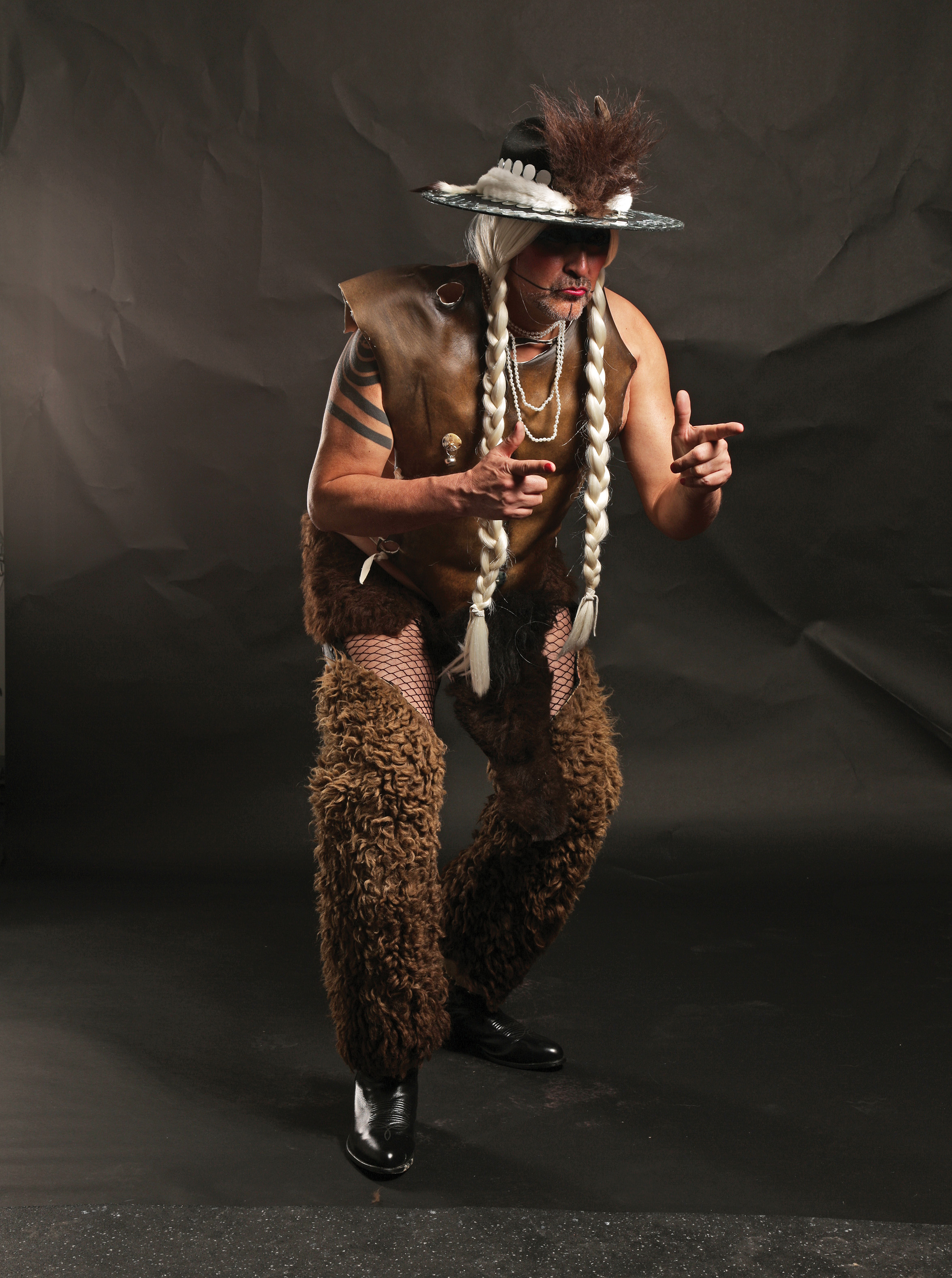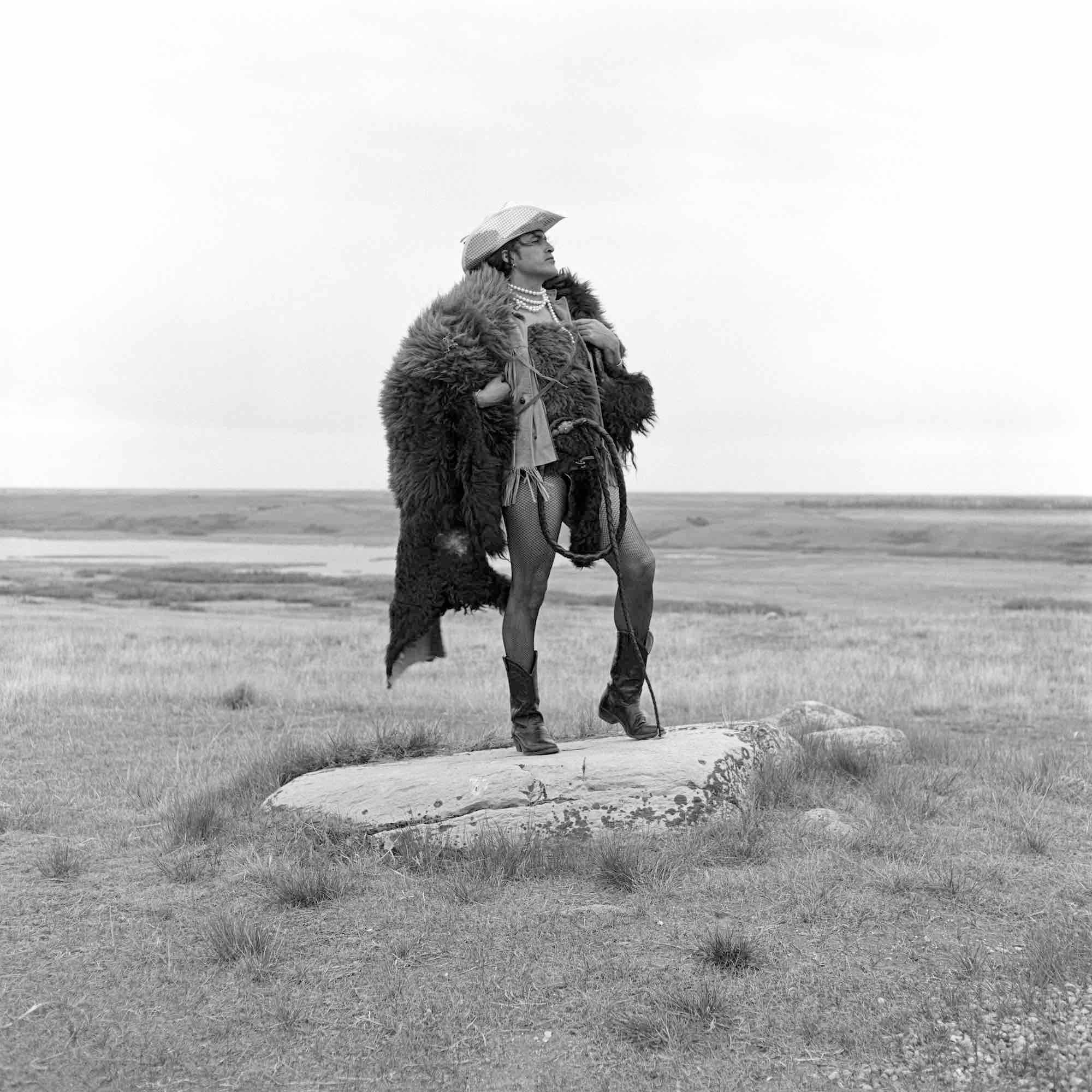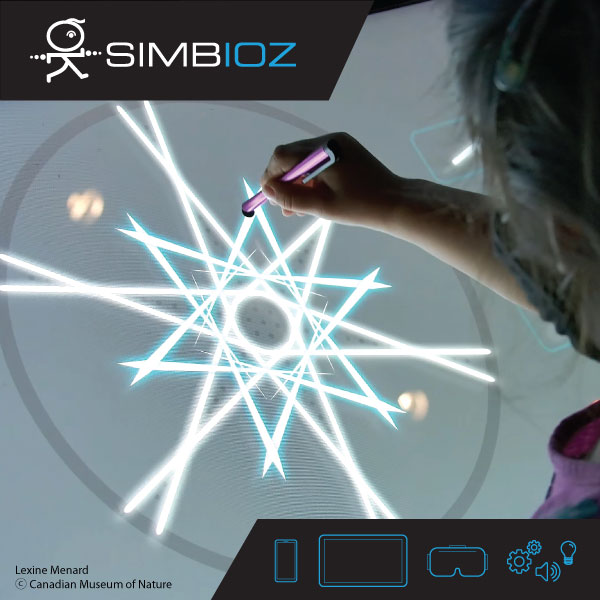Adrian Stimson
Maanipokaa’iin, countering Colonialism, contemplating Reconciliation

Adrian Stimson, Bison Heart II, 2007, oil, graphite on canvas, 53.0 x 122.0 cm. SK Arts Permanent Collection.
On April 2, Remai Modern opened Maanipokaa’iini, the first-ever survey of the work of Siksika Nation artist Adrian Stimson. Maanipokaa’iini means newborn bison in Siksikáí’powahsin, the Blackfoot language. Across his practice, Stimson considers Two-Spirit identity, the centrality of the bison to Blackfoot spirituality and survival, and the intergenerational impacts of the residential school system
CMA Reconciliation Program Manager, Stephanie Danyluk spoke with Adrian just in advance of his retrospective show opening to learn more about his experience as a Siksika Two-Spirit artist working with museums, his work to counteract the colonial project, reflections on reconciliation and the future of the relationship between museums and Indigenous peoples.
[Note: transcript has been edited for clarity and brevity.]
For those who may be unfamiliar with Buffalo Boy, can you describe how this persona fits into your trajectory as an artist?
Buffalo Boy, in a nutshell, has a lot to do with talking back to the colonial project and coming out of the margins.
You know, Buffalo Boy primarily began as a character, parody, and alter-ego of Buffalo Bill and his Wild West Show, which was developed during my time at the University of Saskatchewan doing my Master of Fine Arts. Part of that exhibition actually was directed at museums. I subverted the idea of museological displays. You know, of course, of museums and their history related to anthropology and the cataloging and classification of items. And often when it comes to Indigenous items, they were always classified wrongly. Buffalo Boy took that a little bit further and deliberately misidentified everything and defined it in humorous way to subvert and speak back to that history of classification within museums.

Adrian Stimson, The Shaman Exterminator Spirit Sands #1, 2012, digital photograph, 111.76 x 167.64 cm. Photo — Colin Zipp. Courtesy of the artist.
Interestingly, I have also infused it with my own identity--that being a Two-Spirit person. If I turn into Buffalo Boy, I can get a lot away with a lot more. Part of that is employing humor. Humor, in many ways for Indigenous people has been a strategy of survival. You must have a little bit of a laugh in the midst of tragedy and trauma.
But humor is also a way to open things up to provide space for people to feel comfortable and get in there. I often say it is the tickle and slap method where you sort of tickle somebody a bit, and then when they get in there, you can slap them. And then give them a big hug.
What has your experience been working with museums?
After getting my MFA from the U of S, I immediately moved into the Mendel Art Gallery. I was brought in as the first Indigenous artist in residence, and then I was Indigenous curator in residence. That was the early 2000s. Going back to the late 1990s, museums were starting to bring in Indigenous people into the foray. But the only way they could really bring them in is through a government grant and program. They were not making any sort of accommodation to Indigenous people to hire them as curators or administrators or anything like that. It was often under the umbrella of governmental programs. That was really the only way that Indigenous people could get into the museum and be funded. Most museums were not funding it on their own and were not making any accommodation for the longest time.
But Indigenous people were doing their own work in spite of that. In essence, what happened was a lot of Indigenous artists also had to become curators. Basically, at that time, curators were not curating us so what do you do when people ignore you? Well, you just go and do it yourself. So a lot of us ended up curating our own exhibitions.
 |
 |
| Adrian Stimson, New Born Buffalo Boy (performance stills), 2022. Photo — Blaire Russell. Courtesy of the artist. | |
In your work, have you encountered alternative models for exhibition development that align with Indigenous values and perspectives? If not, what might such a model look like or entail?
I do think Indigenous peoples are creating their own institutions. And that is really something that is coming forward. Here at Siksika, we have our Blackfoot Crossing Historical Park. Other First Nations have their museums, which keeps the culture on the nation.
It is especially important when it comes to sacred items and items that are really important to the community, that they remain in the community. I know there was a huge push on the part of my nation in the 90s where we were calling our bundles back, in particular the Blackfoot bundles. A lot of them were housed in the Bronx in New York City with the Gustav Heye Museum [National Museum of the American Indian George Gustav Heye Center]. At that time, they were still at that point of, “Oh, no, we can’t get can’t give you back the stuff, but you can come and visit it.” So we would have delegations go there in particular to visit the bundles, which are sacred. Society members would go and open those bundles and renew them, but they would remain there. But over the years through the repatriation process, a number of these sacred items are coming back to the First Nations. And we have our own ways of caring for them. A lot of those bundles go to individual families who have the rights to oversee them and use them in a good way. But for those who are not [society members], that is why the Blackfoot Crossing was created. So it could be a repository for these bundles and the people who have these protocols could go and visit them and care for them and renew them in the right ways.
What does the future of relationships between museums and Indigenous artists, exhibitors, or curators look like?
I think we are at a critical mass of Indigenous scholars, Indigenous curators and artists, where the pressure will always be on so that they cannot ignore us any longer. But really, the crux of it is until you start having people on staff who reflect Indigeneity, it is all just still talk.
You still have those governing bodies who can be very problematic with the governance of museums. And when you look at these organizations, every level right from the Board of Governors to the administrators, right down to the janitors, you have to have everybody you can, who wants to be there, be included. So I think that is happening, it is slowly happening. But I also think, as I mentioned earlier, with the critical mass of artists and curators, it is becoming harder for big institutions to ignore Indigenous individuals who are qualified to take those positions.
Is reconciliation a useful term? Do you think we are having the right conversations right now about reconciliation?
Right off the bat, when reconciliation first came into use as a word to describe what we are going to undertake in this country, I often thought it was a misnomer in the sense that it should be “conciliation,” not reconciliation. You know, this is a whole new process. It is about conciliation.
Canadian settlers really need to take on the hard work because it really has been the Indigenous side that has been doing the hard work on reconciliation. I think, first and foremost, it falls to Indigenous people to understand the trauma that has been inflicted on them.
I take it back down to the personal. I am a Residential Day School survivor. I attended two residential schools: the Gordon’s and Lebret schools in Saskatchewan. So I have my own history, and then I always have my familial history, my father’s history in his family, and then his father’s and his family’s. Really when they speak of intergenerational trauma, it is so true.

Adrian Stimson, Buffalo Boy Indi Lake, 2004, black and white 35mm film, digital scan. Photo — Bradley LaRoque. Courtesy of the artist.
That has been a very hard process for a lot of Indigenous peoples because it is about digging up those things that are incredibly traumatic. For a lot of people, it has been incredibly difficult. I know, for myself, it has been difficult to reflect back on the abuse that occurred for me, and I think nobody likes to do that. In many ways, there was a re-traumatization that occurred because of the residential school common experience and the day school experience, and yes, there is support available, but it is a very vulnerable sort of space to be in and each person has their own way of healing. A lot of Indigenous people are seeking Indigenous ways to heal. And I think that’s really important.
As Indigenous people, we are not static. We do not just remain the same. We are dynamic. And in being dynamic, you have to shift, you have to change the way you approach things, you have to evolve in your understandings. That applies to the words we use and the descriptions of reconciliation, or conciliation. Perhaps it will evolve into something more. Reconciliation needs to be reinvented as it moves along.
What do you want the future of the relationship between museums and Indigenous practitioners to look like?
I often think, what would it look like if we achieved everything we wanted to achieve? And certainly, I believe it would be a much more harmonious and fun place to work. And much more interesting, with the inclusion of not only Indigenous ways, but the array of other cultural beliefs and ideas that I think, in many ways, we share in common. We do have our differences, but when it comes right down to it, I think all of us want to attain a sense of security, a sense of happiness, a sense of purpose. Hopefully, we are moving in that direction. M
